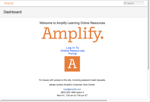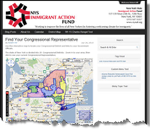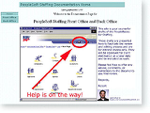I have never settled for just writing technical documentation. Going back to 1997, I have always organized this documentation into websites that present my documents in coherent collections. Below, in reverse chronological order, are some of the documentation projects I’ve built out over the years.
Notes:
- Links to proprietary documents have been disabled to protect client confidentiality.
- Additional writing samples are available upon request.
- Some projects were written in collaboration with other team members, but most of the documentation represented here, and all of the website collections, are my own, original work.
2020. Siemens Healthineers publishes thousands of
customer-facing documents in a public-facing Document Library. These documents remain in the custody and control of Siemens Healthineers. I have worked on multiple systems, but in recent years I have been associated with the Dimension EXL line of integrated clinical chemistry systems. The original documents are written in English, like this one. Once passed through a rigorous approval process they are translated by professional translation firms into 30 languages. I then took them through a final proofreading process and routinely edit them in these final languages.
2015. Amplify Education, Inc., was creating educational software to orchestrate classroom interactions between teachers and students, as well as curriculum content to display in the system. I was part of a team that created the online User Help for the application. Ultimately, I was the last remaining technical writer, solely responsible for it for more than a year. I handled all edits, updates, and creation of new document sets. The Amplify Learning App User Help system has the following characteristics:
- Created using the DITA/XML open-source language.
- Edited with the Oxygen XML editor. While Oxygen does have a WYSIWYG mode, all editing was done in source code mode so that we could attend to the various audience, phrase, and accessibility code compliance tags.
- Each individual page was arranged into place using a ditamap file, one for each audience of teacher, student, help desk, and other administrative sites. Then, XSLT transformations were applied to the ditamaps, using variables from the ditaval files, to produce the required HTML5 and/or PDF output.
- All source code and image files were edited locally, stored/shared via Atlassian SourceTree.
- All change requests were managed with a dedicated Atlassian JIRA project.
- All HTML5 output code was SFTP’d into various web servers inside and outside the corporate firewall using Cyberduck.

(Site Taken Down By Owner, Jan 2021)
2015. Additionally, I was solely responsible for the creation, design, and editing of an online learning resource site used for field trials of the curriculum, delivery of multimedia components of otherwise paper products, and experimental products. The Amplify Learning Online Resources system has the following characteristics:
- Created using the Atlassian Confluence CMS system, but heavily modified at the XML level to remove unwanted elements from the UI, dependent on user role.
- As the primary Confluence Admin, I handled all aspects of system management including user and group creation and management, site configuration and system setup, management of dozens of “spaces” for dozens of group projects, management of backup and restore files, and content development.
- Also co-managed the Vimeo.com and Soundcloud.com sites that hosted the embedded multimedia components.
- Also collected Google Analytics on the site, and provided weekly reporting statistics to various parties.

2010. To satisfy the research project requirements of my M.A. degree in Labor Studies, I conducted a piece of original research on H1-B Visa wage data as it relates to the computer science professions. Previous research had concluded that though employers are legally required to pay H1-B workers the same so-called “prevailing wages” that they would have to pay domestic workers, the wages that were actually paid were significantly lower than those for domestic workers.
This previous research was plagued by systematic problems with the name and wage reporting of the relevant jobs, though. The H1-B system used non-standardized names, whereas the domestic worker system used the set of Standard Occupation Code (SOC) names. A change in Federal policy in 2009 required that the H1-B system adopt the same set of SOC names used by the domestic tracking system, thus making it possible for the first time to accurately, directly compare H1-B worker wages and domestic worker wages.
My research project:
- Downloaded the raw data from the relevant government sites.
- Pulled a subset of the data into a set of spreadsheets for the identified “computer technology” SOC codes.
- Groomed and formatted the data into a set of spreadsheets in a standardized format.
- Systematically compared H1-B wages to domestic wages, and wrote up a report of the findings.
- The results supported previous research results, but improved on the reliability of the conclusions.

2010. New York State Immigrant Action Fund inaugural website. This project was part of my CUNY Summer 2010 Internship. NYSIAF.org is a 501(c)(4) corporation. I launched their web presence, including the following elements:
- Registered several domain names and configured the hosting service to redirect to the main URL.
- Installed WordPress and configured basic outlines of the site.
- Created logos, original artwork, and layout/design of the site.
- Transfer of content, integration with Facebook, etc.
 2010. Jonathan Tasini’s campaign website (no longer online). While I did not install nor configure Jonathan’s official Drupal campaign website, I did have a hand in every aspect of maintaining it. Since January 2010, my day-to-day tasks included:
2010. Jonathan Tasini’s campaign website (no longer online). While I did not install nor configure Jonathan’s official Drupal campaign website, I did have a hand in every aspect of maintaining it. Since January 2010, my day-to-day tasks included:
- Uploading Press Releases, Blog Posts, and Multimedia.
- Shooting and editing video, posting it to the campaign’s YouTube channel, and embedding it in <iframe> elements within the site.
- Maintaining the campaign’s Flickr site and its embed in the main website.
- Creating and managing online petitions, including automated counters embedded within the site.
- Harvesting, grooming, and uploading email addresses into the NGP Campaign Online tool.

2008. As the resident wiki expert at the Merrill Lynch Equity Linked Technology, Post-Trade Services division, I spent much time integrating the JIRA bug report and feature request tracking system with the Confluence wiki. A major focus of this effort involved writing and embedding code in the wiki pages that would pull data from the JIRA database and display it in real-time reports.
Click HERE to view a sample report. This sample was one of several hundred pages of automated reporting that I developed.
This project was in addition to producing various technical and user documents for the bank’s back-end processing systems.
2001. PeopleSoft was creating an entirely new product line for the staffing industry. They needed thorough user documentation that was both web-based and context sensitive. Because they already had a manual of style and existing design templates to be used with all PeopleSoft documentation, the job was a matter of applying existing examples to the new product.
This small intranet site was deployed over the LAN for the benefit of development team members. It provided developers and trainers with access to the documentation as soon as it was available, and it provided management with a tool to measure progress.
This was a six month project that started and ended on-time. Because I didn’t have to invent the manual of style nor the templates, I was able to produce 800+ pages of user documentation for this full suite of human resources apps.
1999. LivePerson needed a way to demonstrate its product to prospective customers. The previous demo system was creating an unacceptable drag on the production system’s performance, and the sales staff needed something that would work without regard to network connectivity; for instance, at trade shows. In addition:
- The demo had to be fast to download and view, universally available to all browsers, and able to be viewed online or put on a cd-rom.
- It had to demonstrate the LivePerson service from the perspective of customers, clients, and administrators.
- It had to simulate interactivity without allowing for any possibility of the demo moving into unexpected variations.
- It had to be freely navigable to any page at any time, yet also have a series of Next buttons that allowed the client to simply click through the demo in a predetermined sequence.

LPSN demo navigation cartouche.
I satisfied all of these requirements and more by creating a set of web pages that used pictures of the interface linked with HTML hotspots. The interface was also marked up with arrows, text, and circles to help lead clients through the demo, and there was a navigation cartouche that allowed for easy navigation forward, back, and to the demo home page.
Being nothing more than simple HTML and .gif files, this demo was very fast to download and view. And, it was reliably viewed in most any browser setup.
All graphics were captured from screen shots and manipulated in Photoshop, creating layers of screen elements that were recombined into the final screens and exported as .gif files.
1998. Bayer Diagnostics had launched the ADVIA120 Hematology Analyzer and was engaged in the development of post-release software updates. Because Bayer is an international pharmaceutical and medical device corporation, all their documentation has to meet ISO 9000 standards. These standards include methods for document distribution.
The intranet site I built for them allowed all development and QA people access to the historic archive of pre-release documents as well as an interface to view post-release documents as they became available.
1997. Dow Jones Markets was developing a prototype Fixed Income Transaction service that used a Java application with multi-cast data feeds. The intranet site I built for the FIT Development Team served several purposes:
- It provided a slideshow of the latest screen shots for demo purposes.
- It provided a set of links to various demo releases.
- It provided an online portal to the full documentation set that included functional requirements, software requirements, testing documents, and server administration and cookbook documents.
- It provided troubleshooting and support to help other Dow Jones people configure their computers for access to the demos.
- It provided management with a means of presenting the team’s ongoing efforts for high level review to assure continued funding for the project.
I wrote most of the documents in this documentation set in collaboration with my team members. As the project was pared back, I was retained as the last remaining technical writer and so took over responsibility for all documents related to this project.





